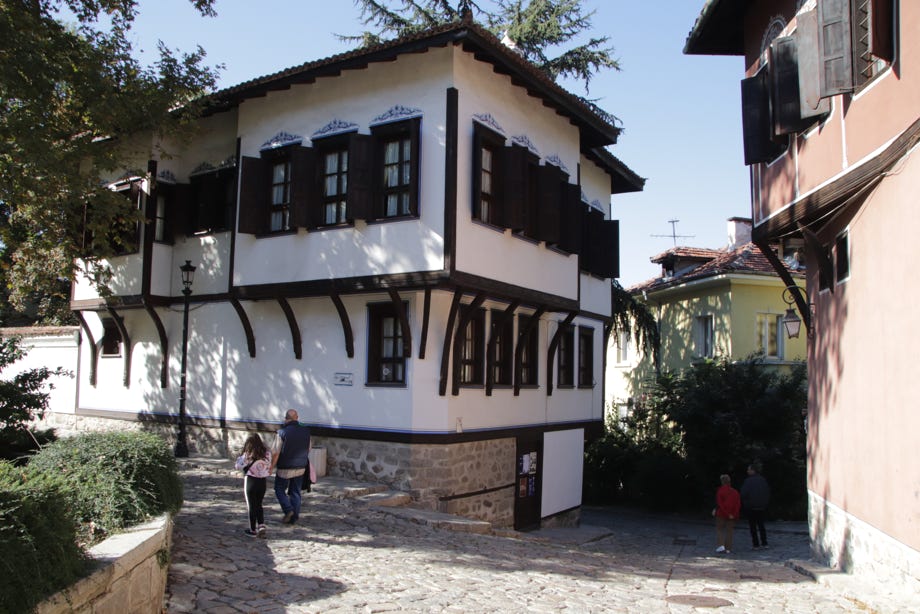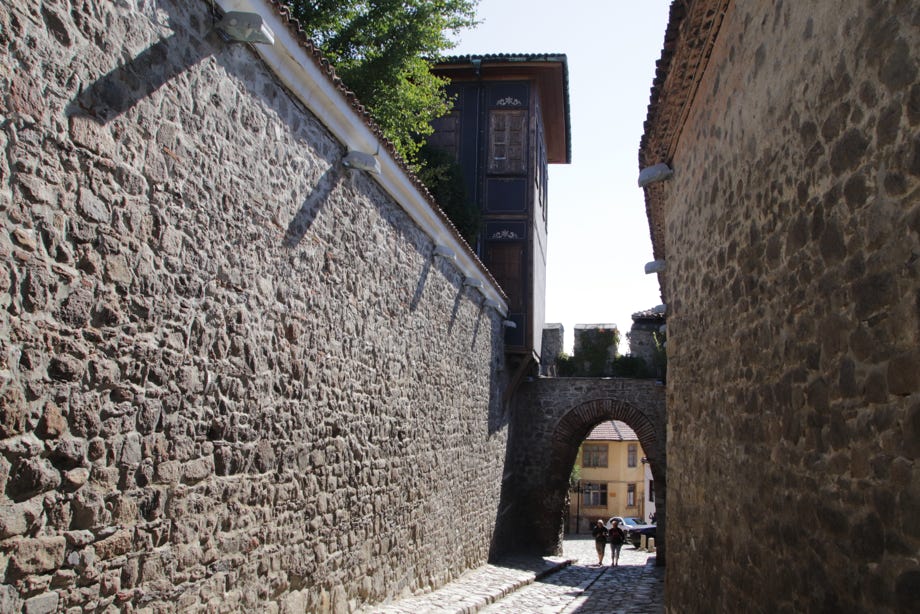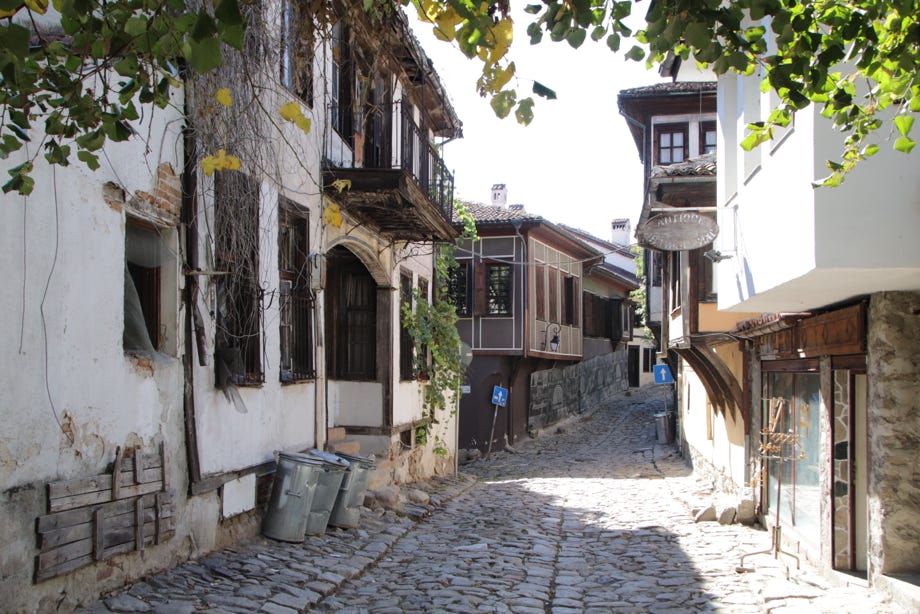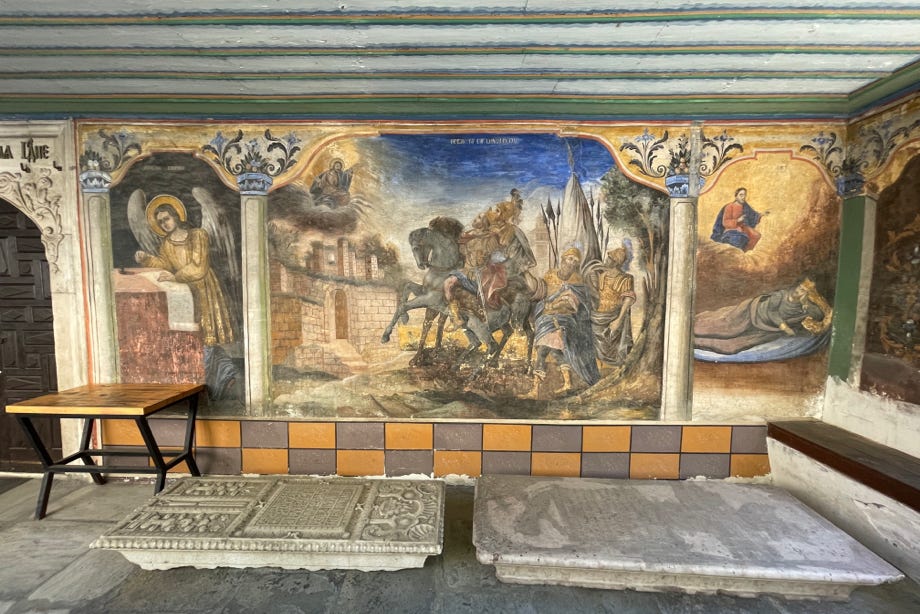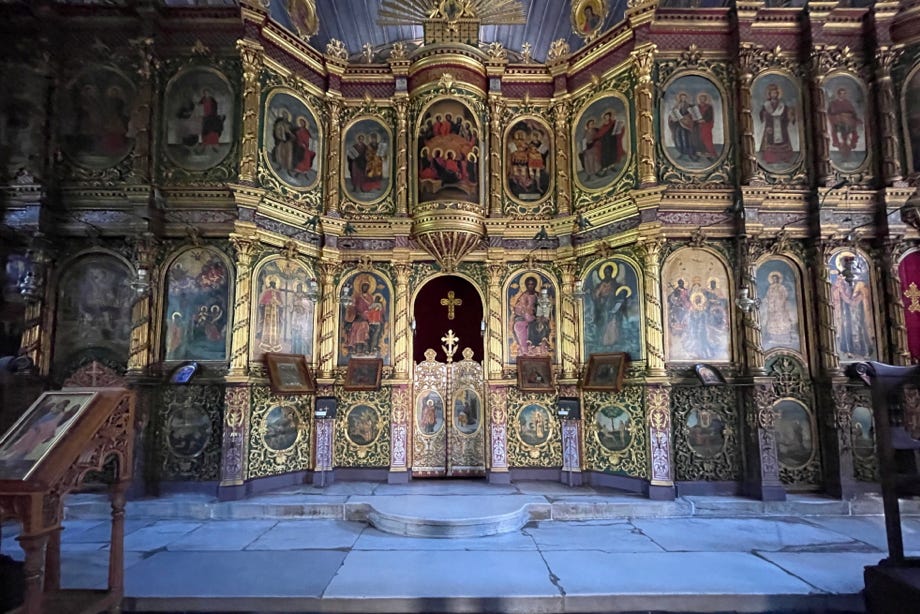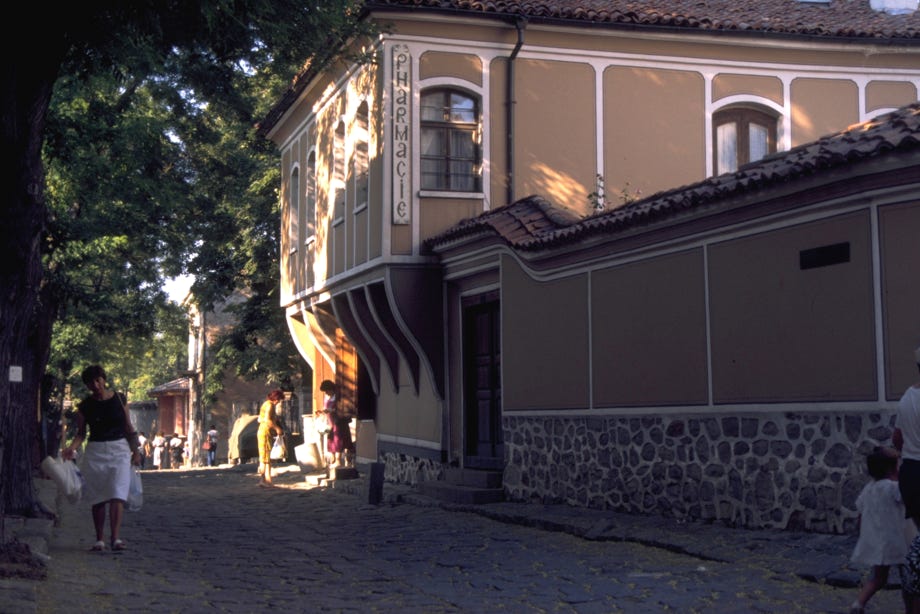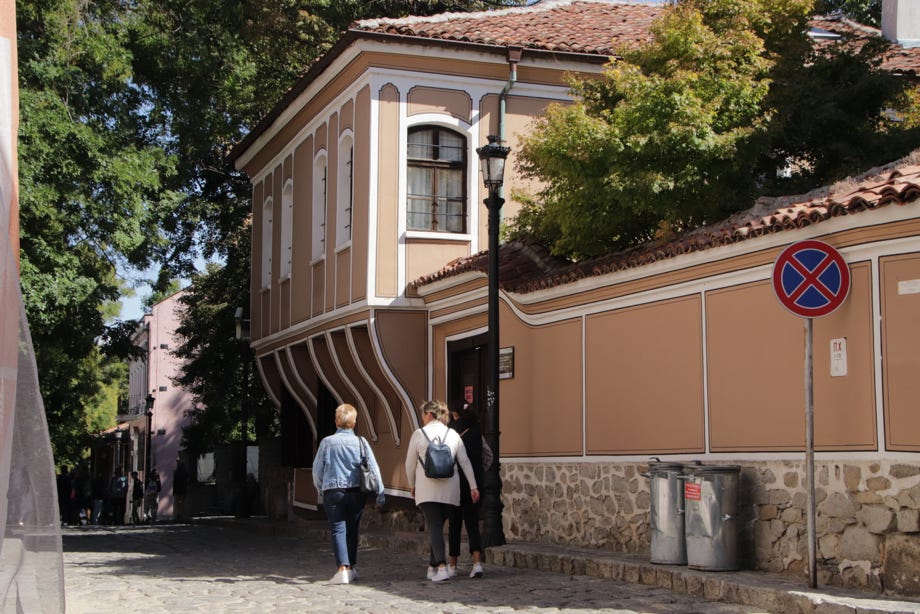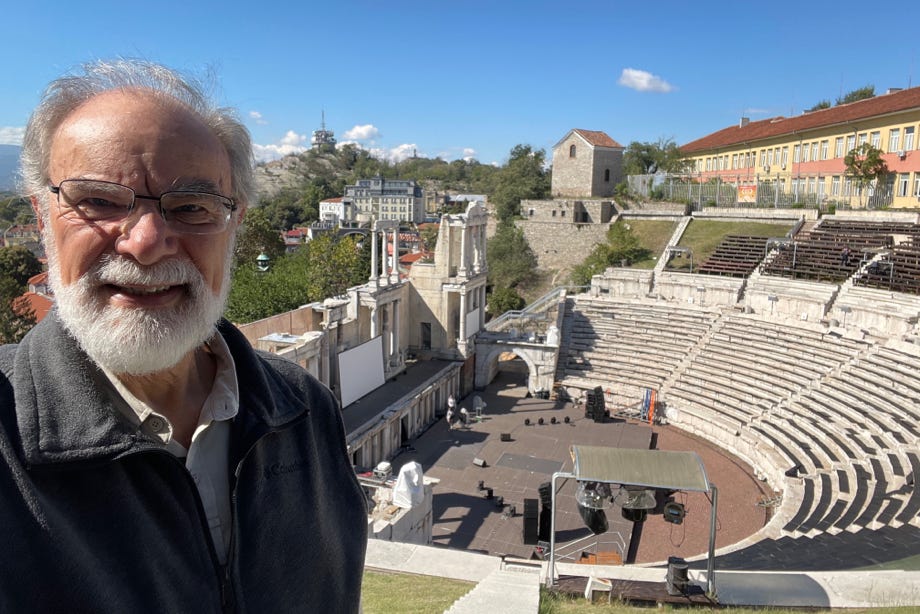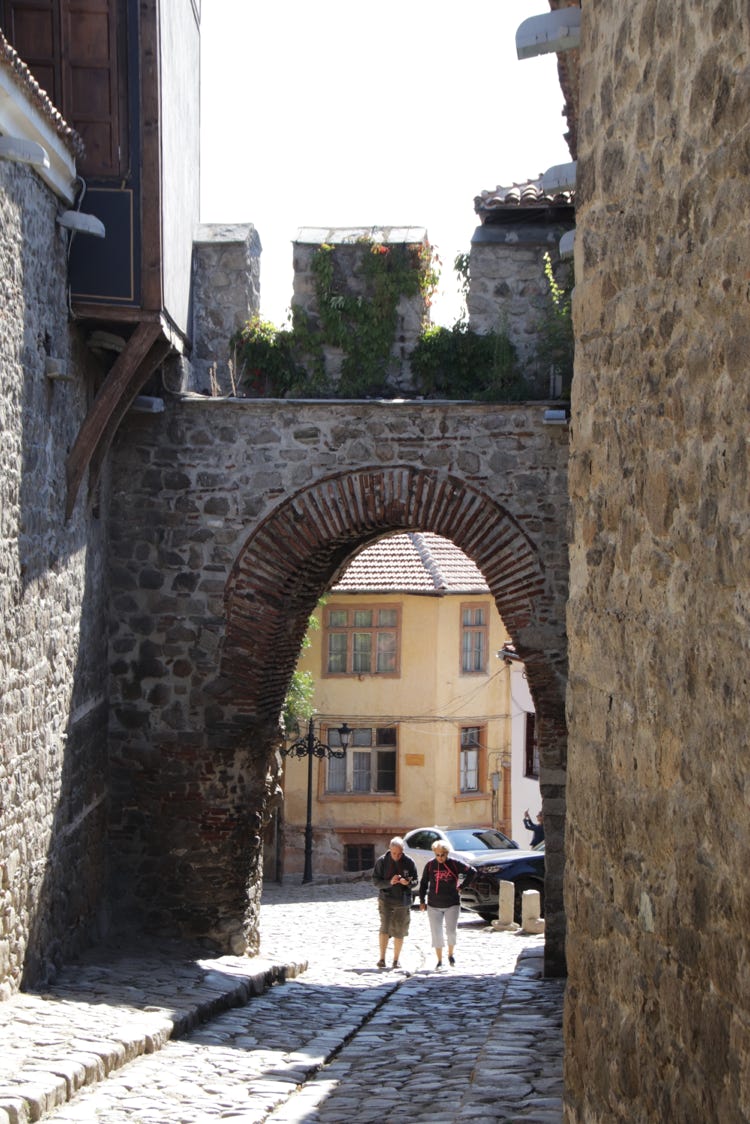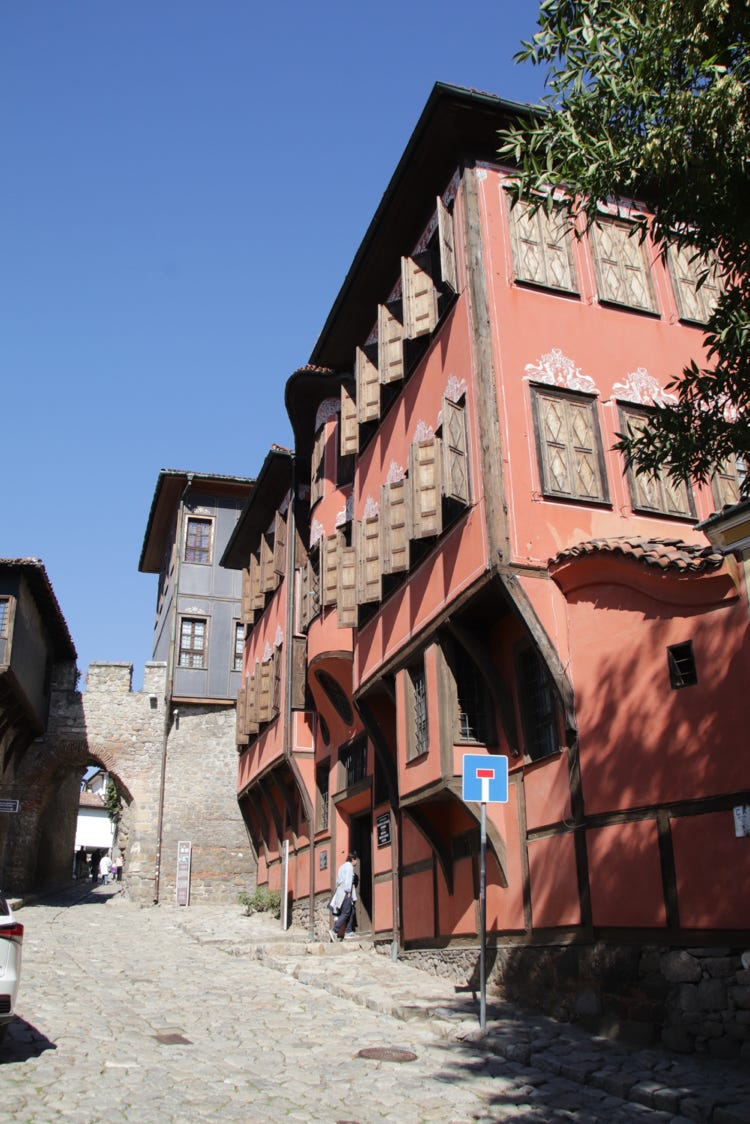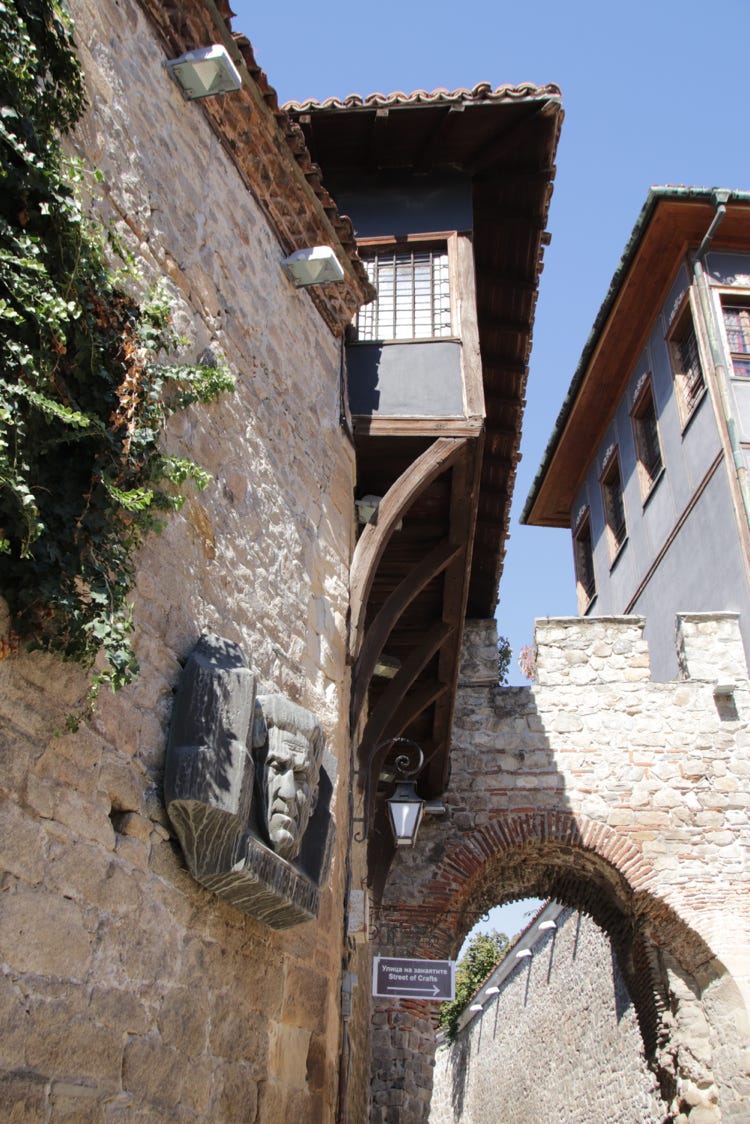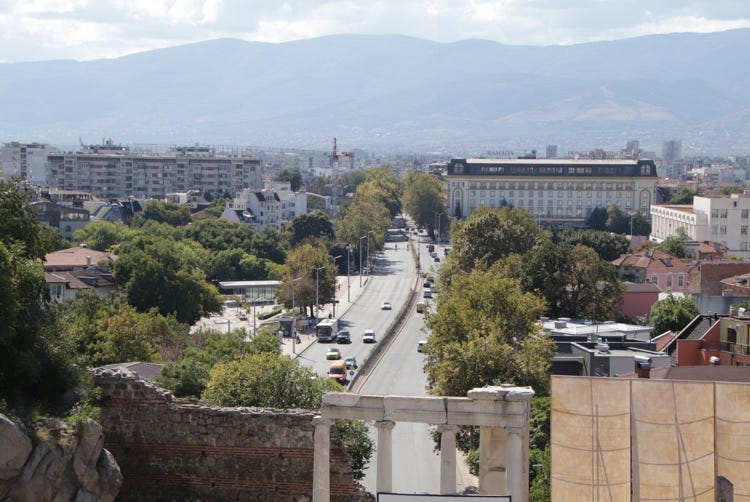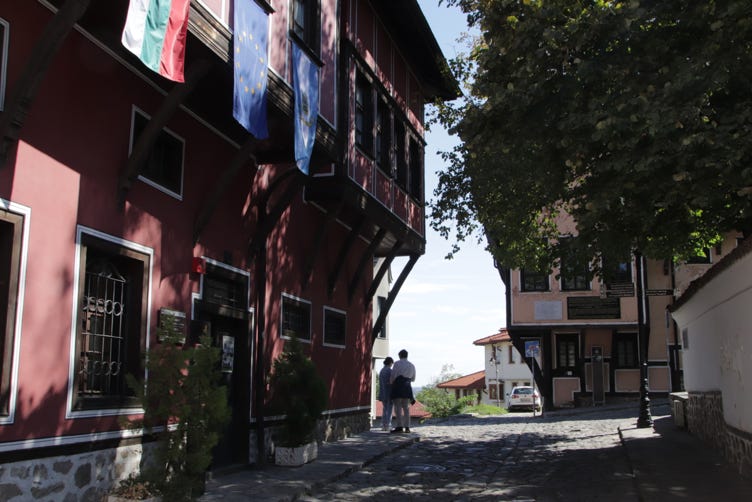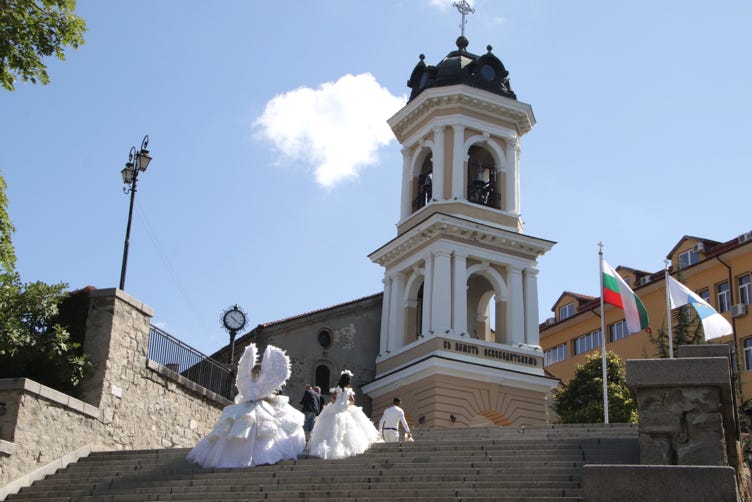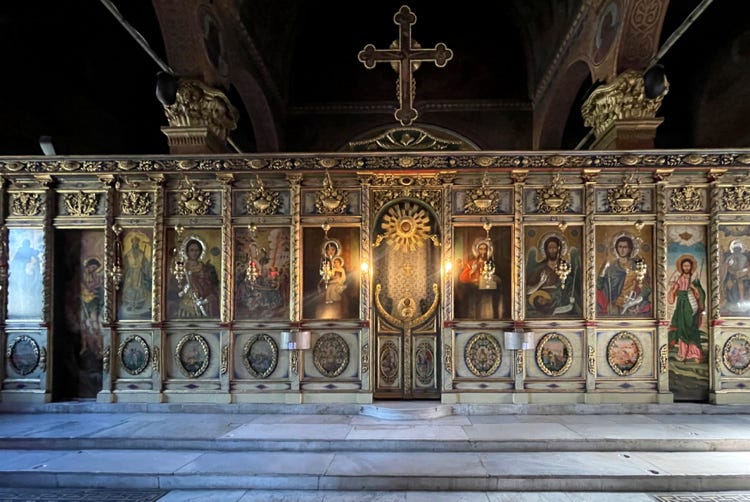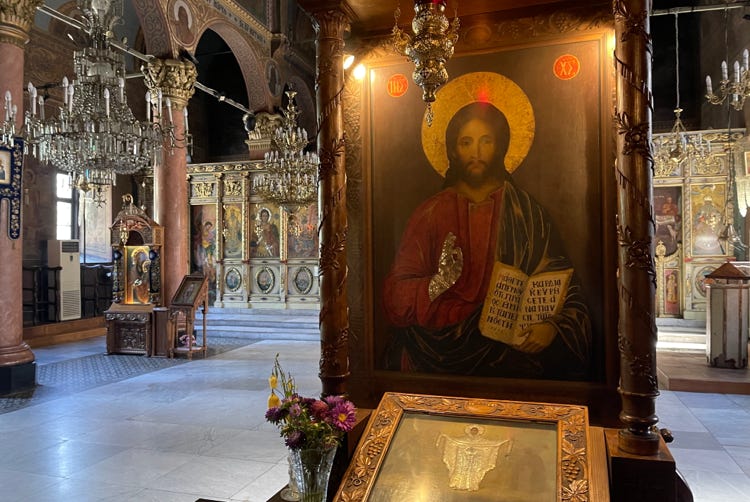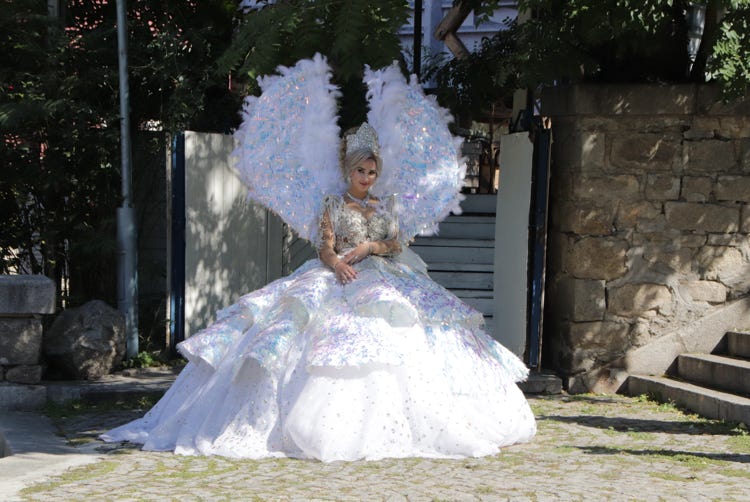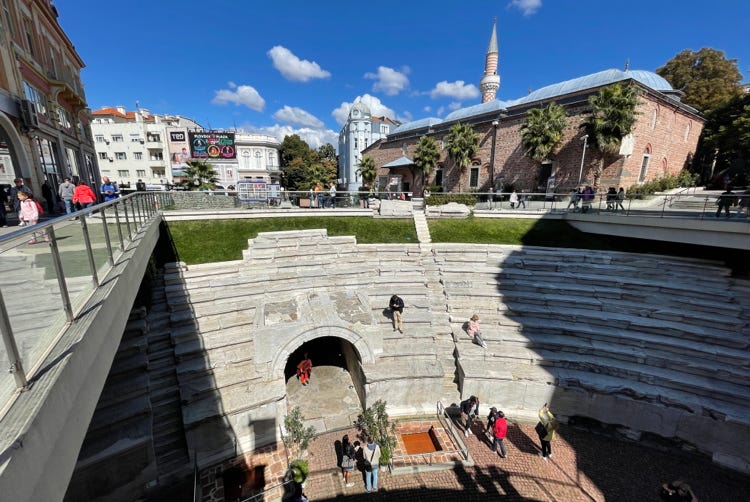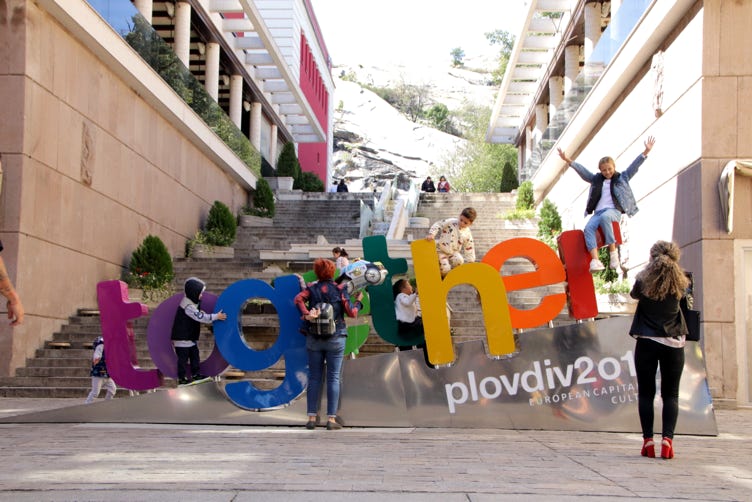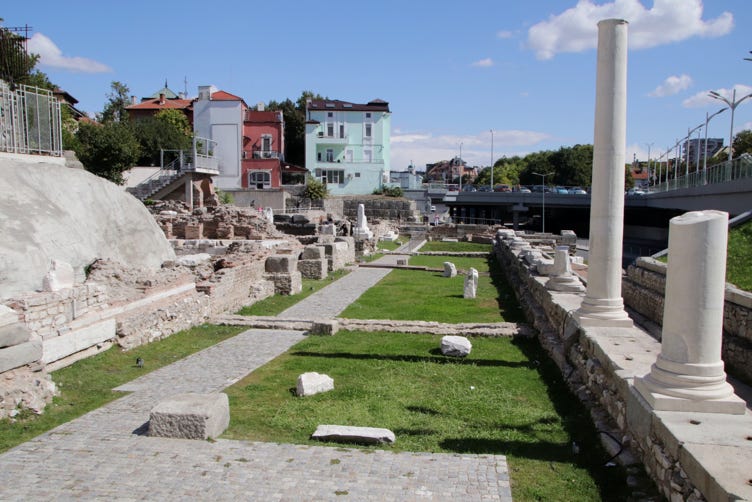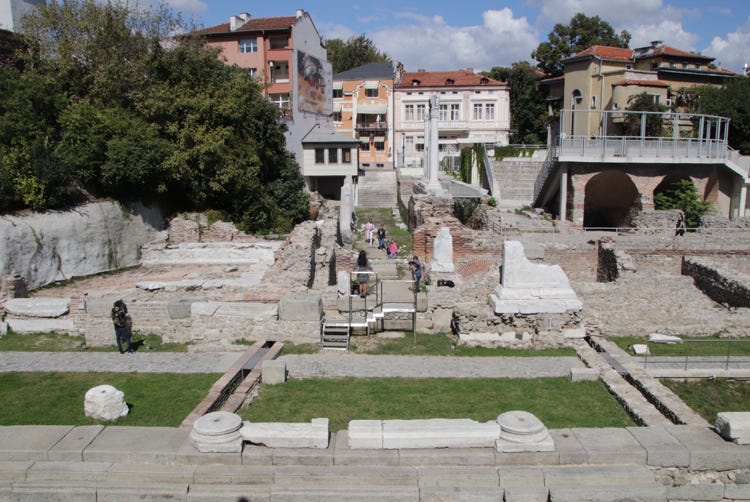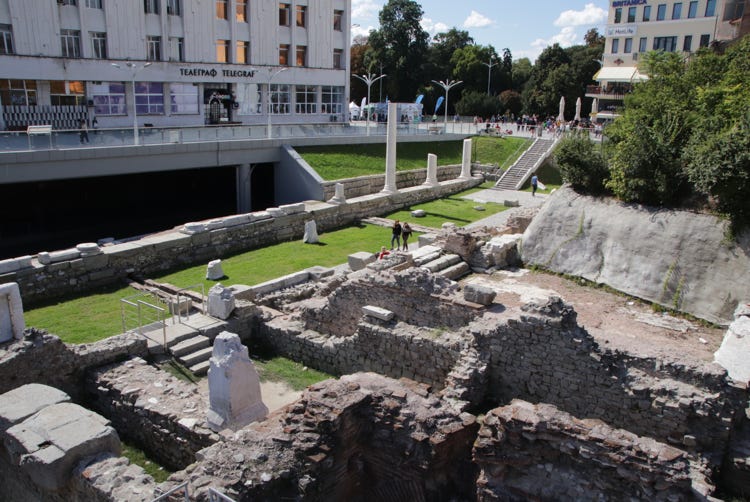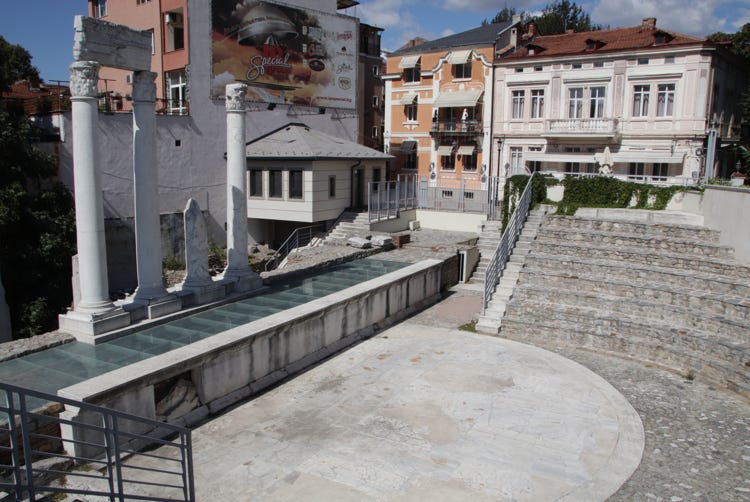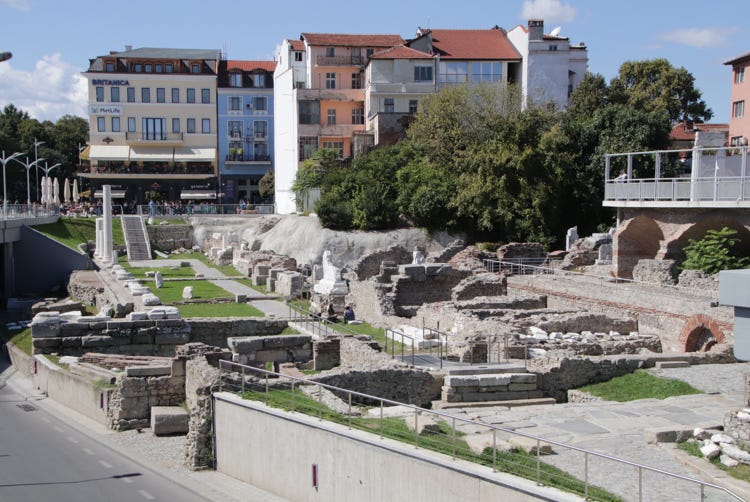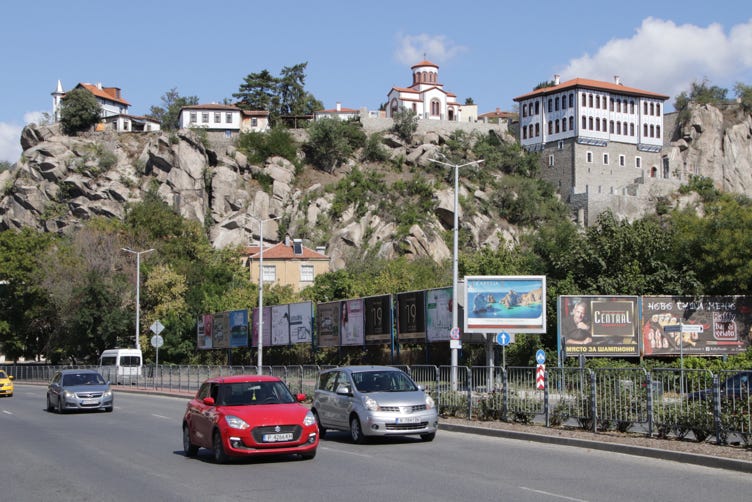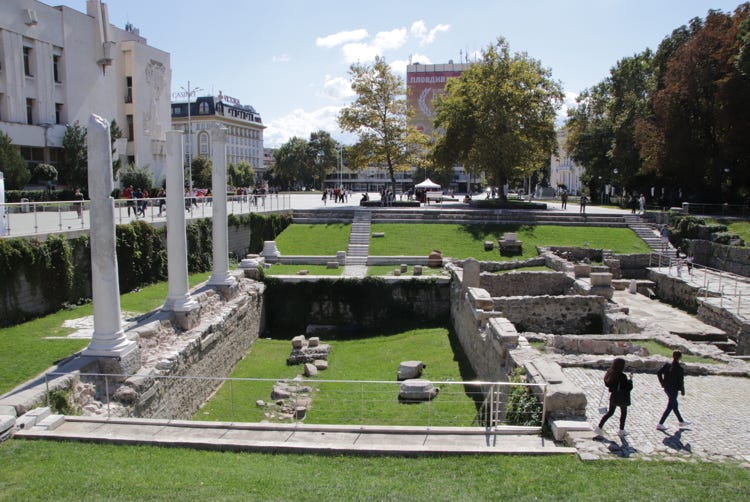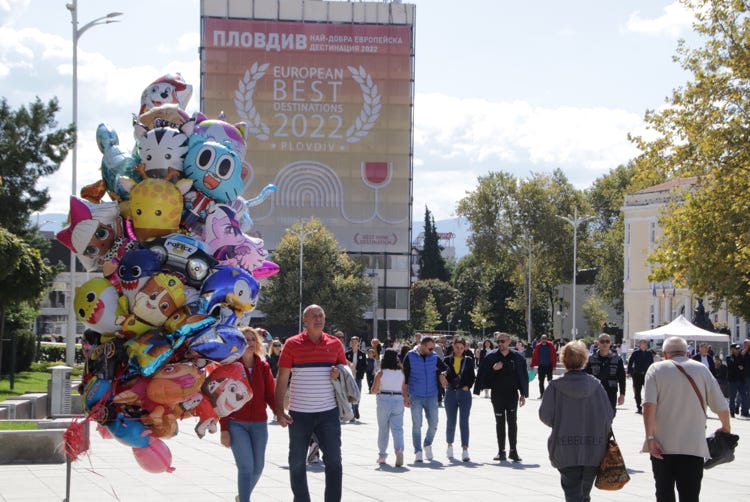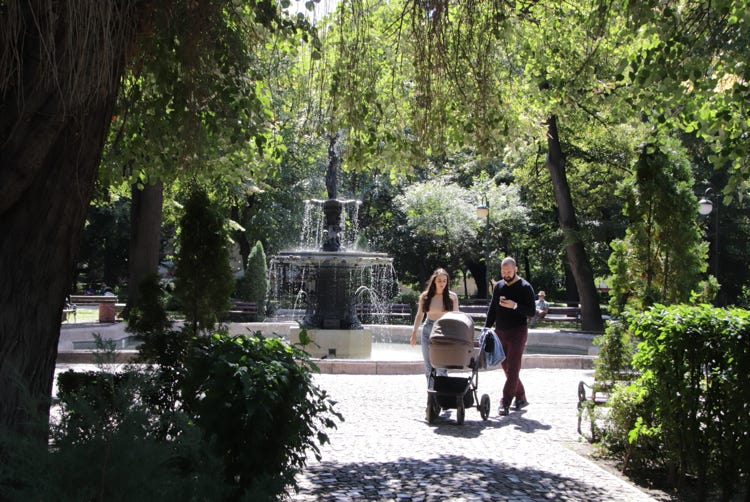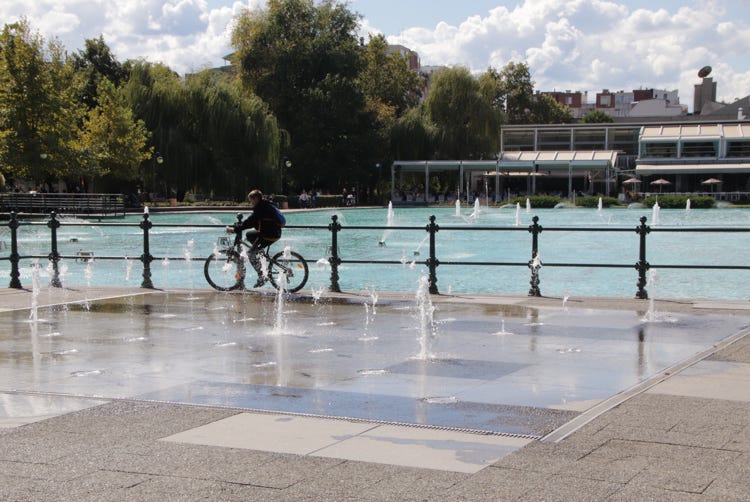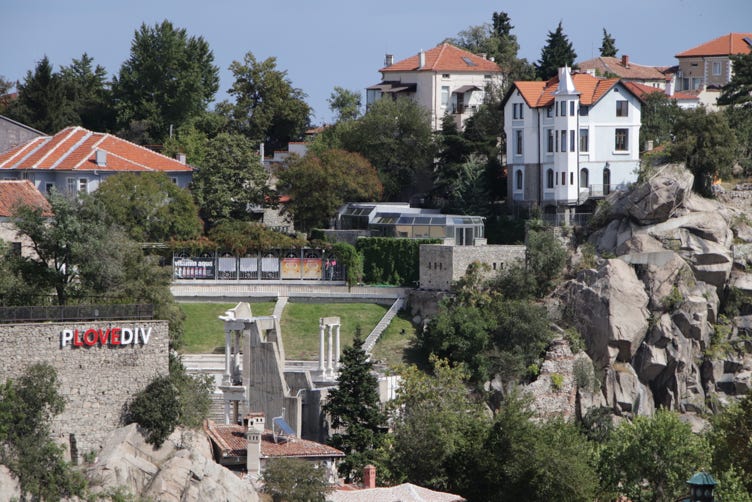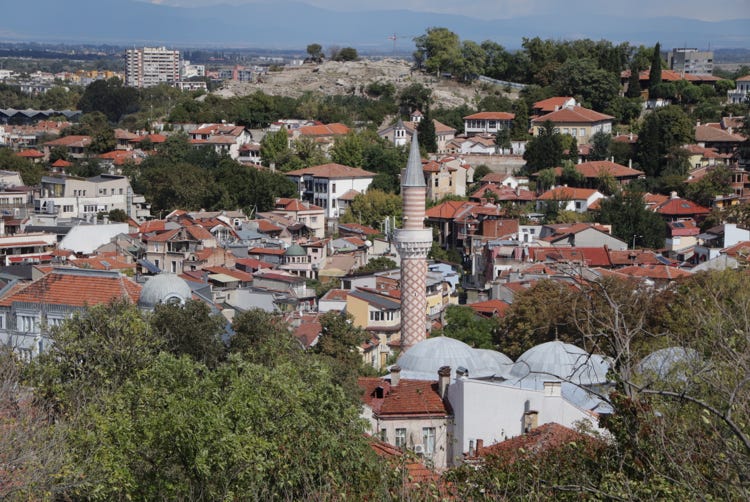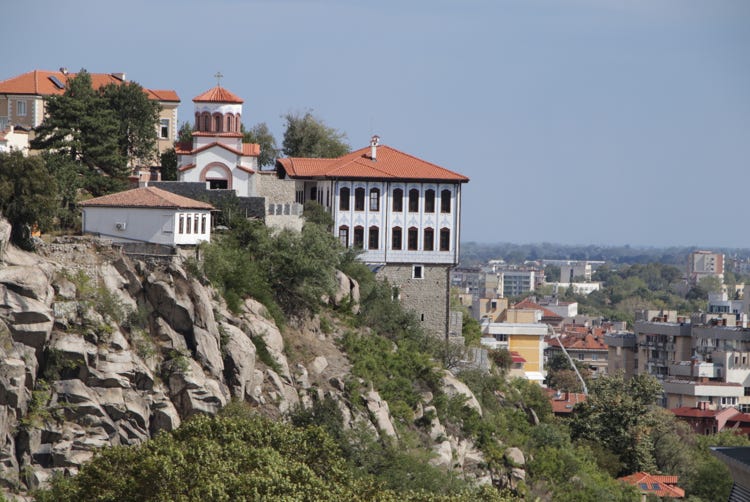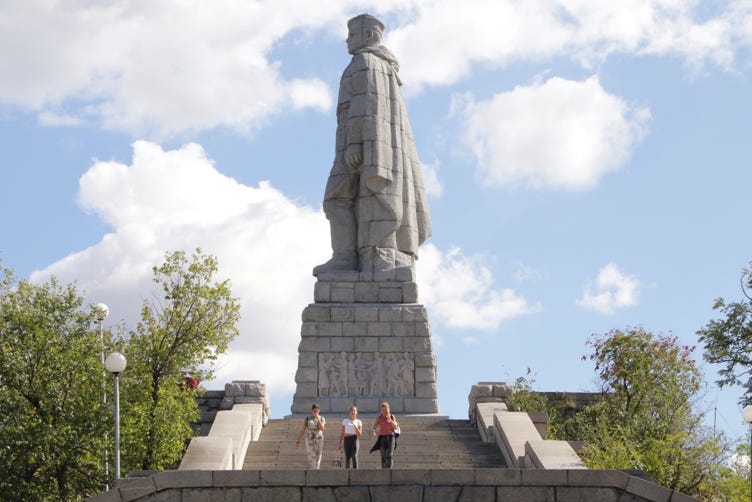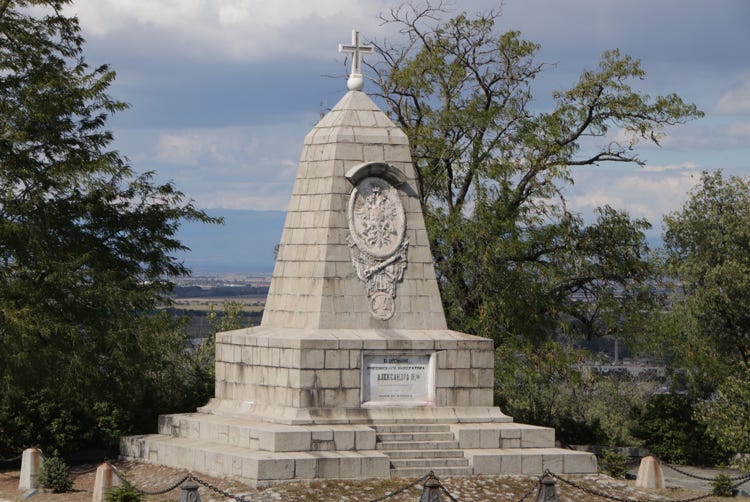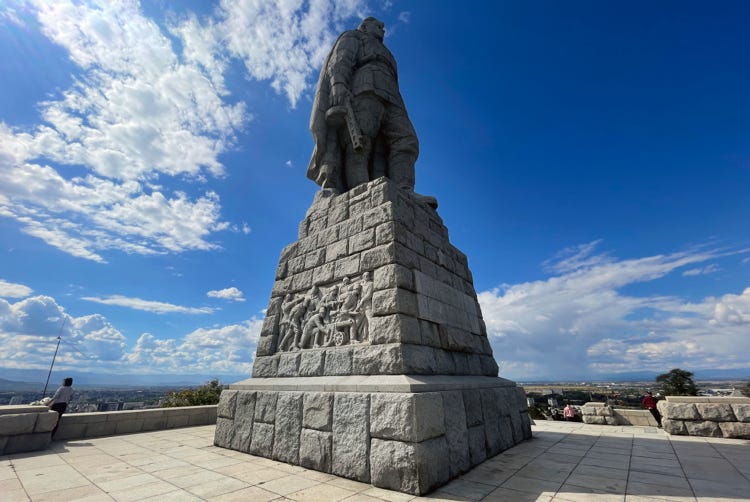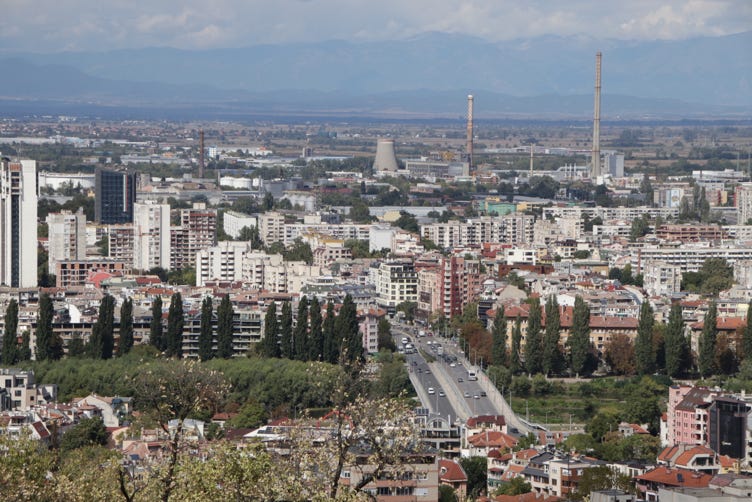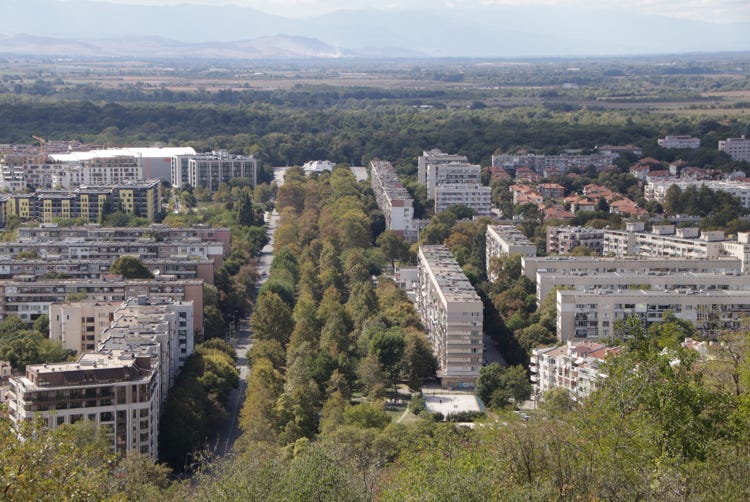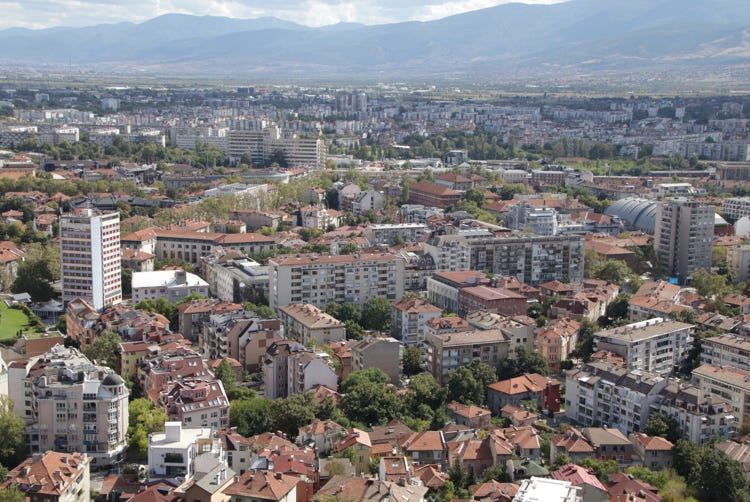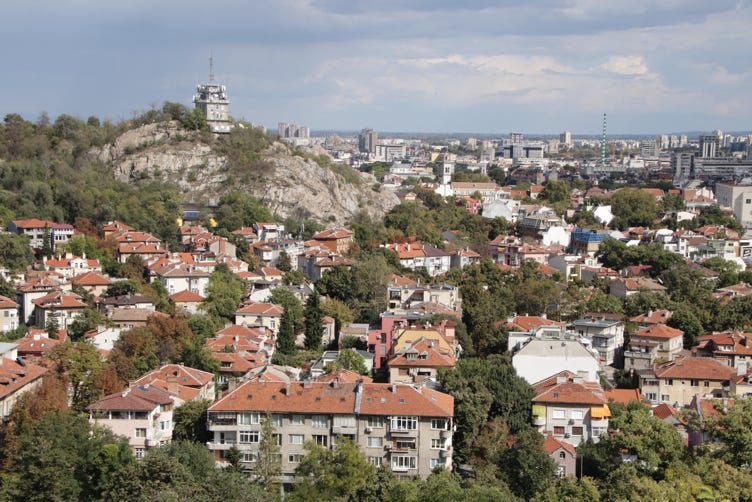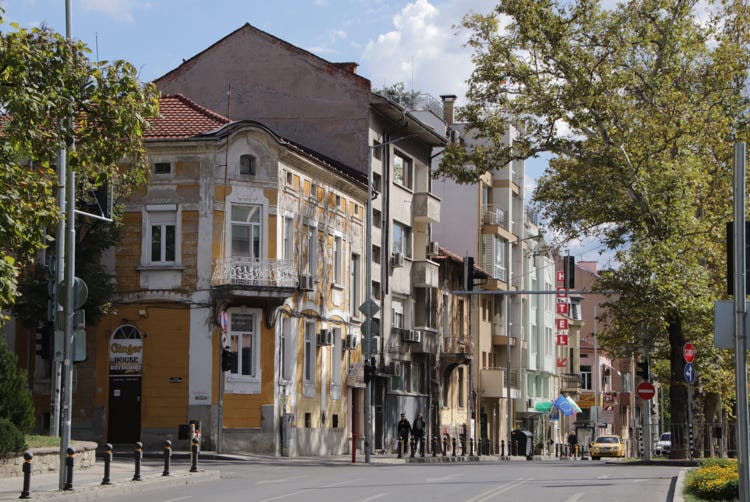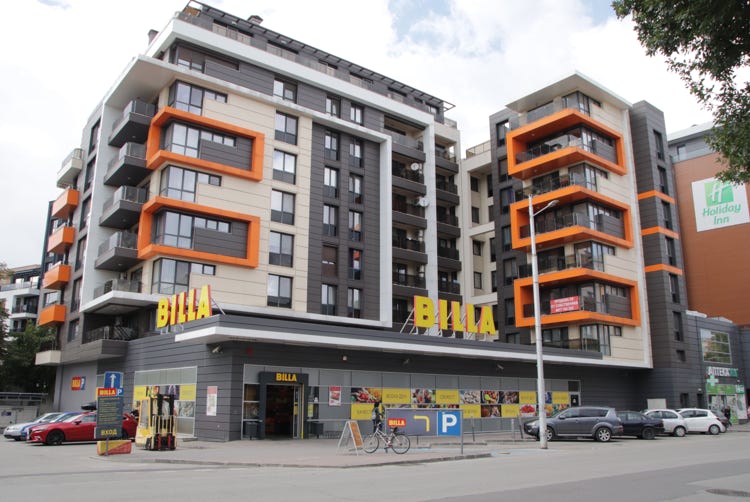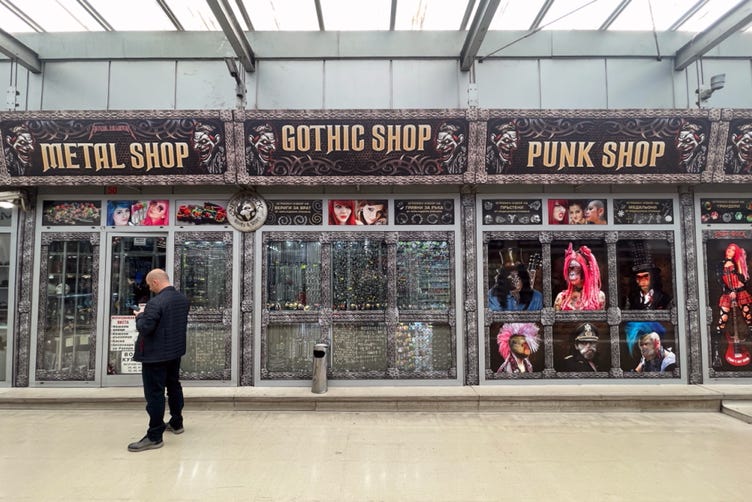
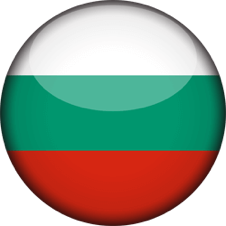
Plovdiv

Distance travelled = 16.4 kilometres walking (21,900 steps).
There are large posters in central Plovdiv promoting the city’s award as one of “Europe’s Best Destinations 2022” having won the awards for “Best Romantic Destination” and “Best Wine Destination”. It does seem a bit perverse to be promoting the virtues of Plovdiv to visitors who have already arrived in the city, but the more I walked around the city today – and I did a lot of walking – the more I came to appreciate this beautiful city. At almost every turn I took, I came across places of beauty and/or interest. With the single exception of the insane amount of cigarette smoking in the streets, which simply cannot be escaped, this is indeed a wonderful city to visit.
The weather was on my side for my day’s walking. The skies were bright blue all morning with some patchy clouds in the afternoon. There were some isolated areas of rain outside the city (as I saw from the tops of some of the hills I climbed), but they didn’t affect the area of the city at all.
Like Rome, Plovdiv is built across seven hills, but its history is even longer than Rome’s. Plovdiv claims to be Europe’s oldest continuously inhabited city with excavations unearthing evidence of a Thracian settlement dating from the 12th century BC. In 341BC the Macedonian King Philip II captured the town and re-named it Phillipopolis after himself. The Romans conquered the city in AD46 and re-named the city Trimontium (“Three Hills”), and built the amphitheatre, stadium, odeon and forum, the remains of which can still be seen today.
Much of my time today was spent climbing hills because that is where both the history and views are evident. I headed first to Nebet Tepe, located on a hill at the northern end of what is known today as “Old Plovdiv”. Nebet Tepe is a rocky outcrop that contains the remains of the fortified walls of Phillipopolis, but unfortunately, I found the entire area was firmly enclosed and securely locked for renovations.
With Nebet Tepe eliminated, I explored the streets and laneways of Old Plovdiv. The cobble-stoned laneways and the colourful buildings with overhanging balconies combine to create wonderfully picturesque streetscapes, and the clear sunlight showed them to advantage this morning. In a small square at the intersection of Ulitsa Saborna, Ulitsa Doktor Stoyan Chomakov and Ulitsa Chetvarti Yanuari a choir had assembled and was performing some lovely choral music that resonated beautifully through the narrow stone laneways. You can experience this beautiful singing and see the surrounds in two short videos, one that is 2:22 and one 2:34.
Having been raised to sublime heights of musical ecstasy, I then called into the Church of Saints Konstantin and Elena, a lovely place of quietness and solitude. Although there was a Christian church on the site in the 4th century, the present building dates from the 19th century, and it has some colourful external frescoes and quite striking gold-plated iconostasis inside.
I continued my walk, stopping to photograph the Old Pharmacy Museum. It was closed but I had photographed it in 1987, so wanted to get a comparative photograph (not that there had been many changes). Frustratingly, I needed to stand right where a car was parked to get precisely the right angle, but hopefully the comparison below gives a reasonable impression.
My next stop was Plovdiv’s most famous landmark, the Roman Amphitheatre that I had visited yesterday afternoon when the light was duller and at a very different angle. (As a side note, the Amphitheatre is the only place in Plovdiv where I have had to pay any entry fee, a very reasonable 5 leva, or $3.80 Australian). I was pleased to visit fairly early in the day (it was about midday) because signs announced that the amphitheatre would be closed to visitors from 2:00pm because a concert performance was scheduled for later in the afternoon. Apparently this 2nd century structure had been buried until a freak landslide uncovered it in 1972; hard to believe that it was hidden for so long given its prominent location today.
After a brief stop to look at the old building where French President François Mitterand stayed in 1989, I continued to The Assumption of the Holy Virgin Orthodox Church, originally established in 1188 although the present building was constructed in 1844. The interior was less ostentatious than many Orthodox churches, and there was an interesting (but obscure) ceremony underway on the steps of the church.
My walk took me past the recently excavated ruins of the Stadium of Phillipopolis in (or rather under) the pedestrian mall outside the Dzhumaya Mosque. The Roman stadium was built in the 2nd century, and is now being incorporated into the plaza infrastructure.
Just south of Stambolov Place near the Telegraph Office a wonderful vista opened up to me – the Roman Odeon. Open to the public to explore for free, the Odeon was constructed at the end of the 1st century AD and was once the seat of the city council. It includes a small amphitheatre that apparently still hosts performances. It was very impressive to find such a well-maintained set of ancient ruins open to public so close to the city centre.
My walk continued to Tsar Simeon Garden, a large area of beautiful, green, shady, well maintained parklands – the lungs of central Plovdiv. At the south-western corner of the gardens Plovdiv’s famous singing fountains are found. Maybe it was time of day when I visited, but as you can see HERE (1:10), I think the fountains are over-rated.
Having cleared my head (and my lungs to some extent) in the parklands, it was time to climb a couple of hills. The first hill was just a few minutes’ walk west of the city centre. Sahat Tepe has good views over the central part of Plovdiv and is topped by an Ottoman clock tower that was built in the early 1800s.
The next hill was further to the west and involved a walk (or, more accurately, a long climb) of almost half an hour. Bunarjik Hill is topped by the Alyosha Monument, which is an 11 metre high reinforced concrete statue of a Kalashnikov-wielding Soviet soldier that dates from the mid-1950s. The statue is apparently controversial, and Plovdiv authorities tried (unsuccessfully) to get it removed in 1989, and again in 1996.
My main objective was not to see the statue which, although interesting, was not especially well executed artistically (IMHO). My primary purpose was to admire the views of the city, and the views were indeed excellent – or rather, they were excellent when the grey clouds dispersed.
As the skies darkened and the threat of rain became real, I made my way back to my room at the hotel, very satisfied with the day’s explorations.

